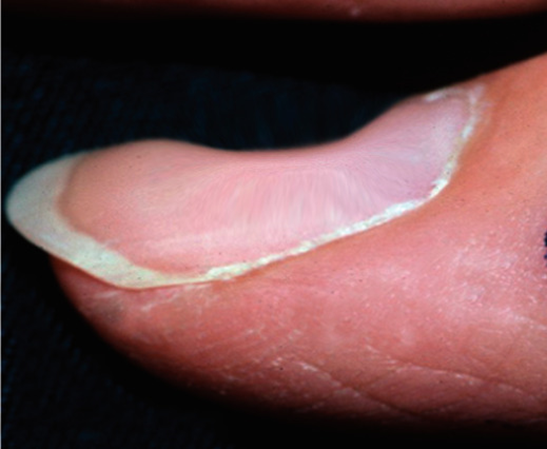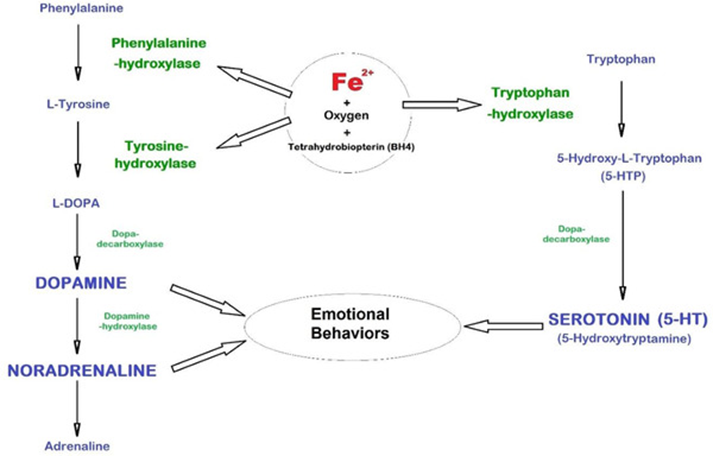Welcome to part 3 of the ODX "Deep Dive Into Iron Metabolism" Series. In the 3rd post in our series, we cover iron deficiency anemia.
The ODX Iron Metabolism Series
Dicken Weatherby, N.D. and Beth Ellen DiLuglio, MS, RDN, LDN
- Iron Metabolism Part 1 - Introduction to Iron Metabolism
- Iron Metabolism Part 2 - The physiology of iron
- Iron Metabolism Part 3 - Disorders associated with altered iron status: Iron Deficiency Anemia
- Iron Metabolism Part 4 - Disorders associated with altered iron status: Iron Overload
- Iron Metabolism Part 5 - Biomarkers of iron status
- Iron Metabolism Part 6 - Addressing disorders associated with altered Iron status
- Iron Metabolism Part 7 - ODX Optimal Takeaways and References
Disorders Associated with Altered Iron Status: Iron Deficiency Anemia (IDA)
Iron deficiency is the most frequently seen nutrient deficiency worldwide and is most often caused by inadequate intake, malabsorption, hemorrhage, and blood loss (Hanif 2022). Anemia is the most common complication of iron deficiency and is characterized by small, pale red blood cells and is categorized as microcytic and hypochromic (Warner 2023).
Iron deficiency anemia is most common in women, children, and vegans, though it is also seen with chronic bleeding, malabsorption, and genetic disorders. The main signs of IDA are fatigue and pallor due to small hemoglobin-deficient red blood cells (Gattermann 2021).
Abnormal blood vessel formation can cause excessive bleeding. This leads to iron deficiency anemia and is characteristic of hereditary hemorrhagic telangiectasia (HHT) (Kritharis 2018).
Signs and symptoms of iron deficiency
Symptoms of iron deficiency may be nonspecific and include fatigue, shortness of breath, decreased work performance, and cognitive impairment. Complications from IDA may include infection, cardiovascular issues, worsening of congestive heart failure, increased hospital complications and length of stay, pregnancy complications, developmental delay (Warner 2023), depression, chronic fatigue, tachycardia, angina, dizziness, tinnitus, headache, faintness, restless leg syndrome, alopecia, brittle nails, dry hair and skin, pallor (Berthou 2022), neurocognitive dysfunction, and behavioral problems in children and adults (Gattermann 2021).
Signs and symptoms of IDA may vary according to the stage of deficiency. Early signs of IDA include fatigue, compromised muscle function, decreased immunocompetence, epithelial disorders, and growth abnormalities. Later symptoms include gastritis, epithelial tissue defects, cardiac failure (Raymond 2021), oral fissures, hair loss, atrophic glossitis, and pica (Gattermann 2021).
Pagophagia pica, craving or chewing ice, is relatively specific to iron deficiency and may accompany other cravings associated with pica in general, including soil, chalk, or paper (Bermejo 2009).

Iron deficiency - spoon-shaped nail. Image courtesy S Bhimji MD
Source: Warner, Matthew J. and Muhammad T. Kamran. “Iron Deficiency Anemia.” StatPearls, StatPearls Publishing, 7 August 2023 This book is distributed under the terms of the Creative Commons Attribution-NonCommercial-NoDerivatives 4.0 International (CC BY-NC-ND 4.0) (http://creativecommons.org/licenses/by-nc-nd/4.0/ )
 Iron implication in neurotransmitter production and function. Serotonin plays an important role in changes in emotional state. It is particularly involved in the management of moods, is associated with the state of happiness and leading the individual to maintain an emotional situation that is favorable to him. Dopamine is the main neurotransmitter of the motivational component of reward and reinforcement. Synthesis of serotonin and dopamine is dependent on brain hydroxylases which use iron and tetrahydrobiopterin (BH4) as cofactors. Their synthesis is hampered and deficient in case of iron deficiency.
Iron implication in neurotransmitter production and function. Serotonin plays an important role in changes in emotional state. It is particularly involved in the management of moods, is associated with the state of happiness and leading the individual to maintain an emotional situation that is favorable to him. Dopamine is the main neurotransmitter of the motivational component of reward and reinforcement. Synthesis of serotonin and dopamine is dependent on brain hydroxylases which use iron and tetrahydrobiopterin (BH4) as cofactors. Their synthesis is hampered and deficient in case of iron deficiency.
Source: Berthou, Christian et al. “Iron, neuro-bioavailability and depression.” EJHaem vol. 3,1 263-275. 5 Dec. 2021, doi:10.1002/jha2.321 This is an open access article under the terms of the http://creativecommons.org/licenses/by/4.0/ License
Evaluating Iron Deficiency Anemia
Iron deficiency anemia cannot be diagnosed with a single biomarker. The most useful diagnostic biomarkers include serum iron, ferritin, and transferrin, along with an evaluation of cell size (Raymond 2021). In IDA, serum iron, ferritin, and transferrin saturation decrease while total iron-binding capacity increases (Warner 2023).
Stages of Iron Deficiency Anemia
Biomarker values decrease in iron deficiency much earlier than clinical symptoms appear. Early biochemical changes are reflected in the defined stages of iron deficiency anemia. Noticeable physical symptoms may not appear until stage 5 (Merck Manual IDA, Raymond 2021).
Stages of Iron Deficiency Anemia |
|
| Stage 1 |
|
| Stage 2 |
|
| Stage 3 |
|
| Stage 4 |
|
| Stage 5 |
|
Causes of Iron Deficiency Anemia (Bermejo 2009)
- Deficient iron intake
- Digestive disorders
- Increased losses of iron
- Cancer/polyp: colon, stomach, esophagus, small bowel
- Peptic ulcer, esophagitis
- NSAID use
- Inflammatory bowel disease: ulcerative colitis, Crohn's disease
- Intestinal parasites
- Vascular lesions: angiodysplasia, watermelon stomach
- Meckel’s diverticulum
- Reduced iron absorption
- Celiac disease
- Bacterial overgrowth
- Whipple’s disease
- Lymphangiectasia
- Gastrectomy (partial and total) and gastric atrophy
- Gut resection or bypass
- Urological and gynecological disorders
- Intravascular hemolysis
- Prosthetic valves and cardiac myxomas, paroxysmal nocturnal hemoglobinuria, marathon runners, multiple blood donations
Differential Diagnoses for IDA (Hanif 2022, Warner 2023, Lee 2020):
- Anemia of chronic disease
- Autoimmune hemolytic anemia
- Chronic fatigue syndrome
- Chronic medical conditions
- Depression/mood disorders
- Fibromyalgia
- Hemoglobin CC or DD disease
- Hemoglobin S-beta thalassemia
- Hypothyroidism
- Lead poisoning
- Malnutrition
- Microcytic anemia
- Psychiatric disorders (IDA increases risk)
NEXT UP: Iron Metabolism Part 4 - Disorders associated with altered iron status: Iron Overload







